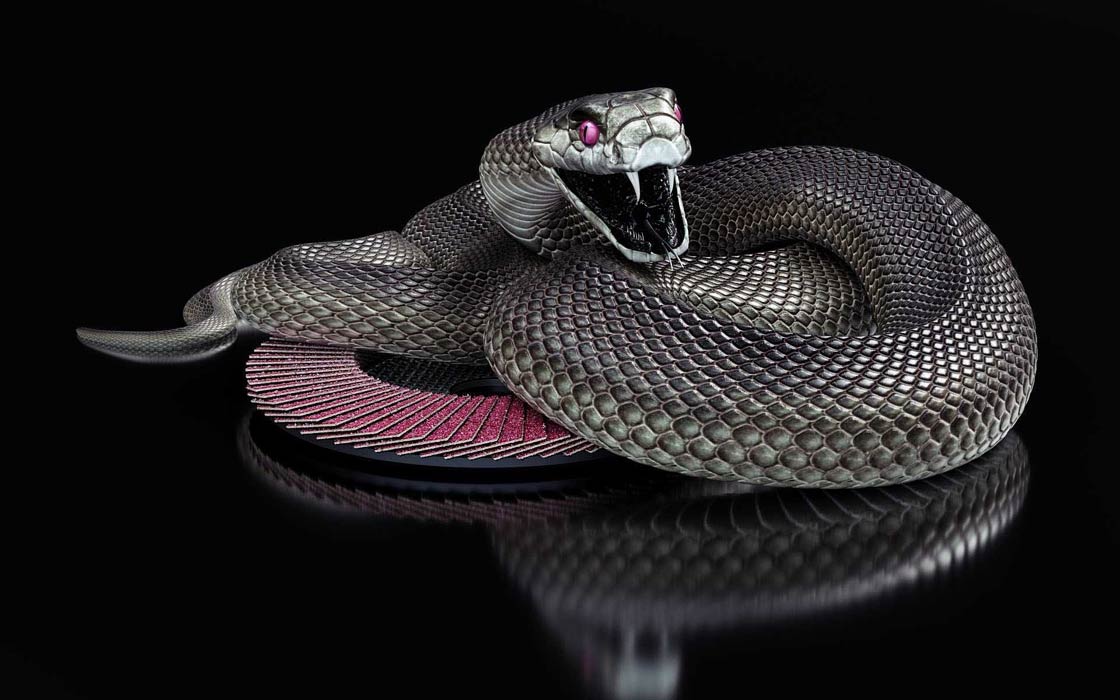Snakeskin and its applications
Snake’s skin and its uses
Durable and sensitive snake skin
If you touch a live snake, you would be surprised to find that its skin on the top has a rough surface and on the underside is smooth. Why do snakes have this structure, and how might it prove helpful to humans? It is worth investigating this matter closely.

Snake portrait
Snakes are reptiles of the Squamata. So far, more than 3,900 species, assigned to 520 genera, have been discovered and described. Their characteristic, elongated, legless body can contain up to 400 vertebrae.
Snakes play a major role in cultural history and mythology and, based on this, also in art and literature: In the Old Testament creation story of the Bible, a snake seduced Adam and Eve into tasting the fruit of the tree of knowledge. The staff of Asclepius, wound around by a snake, in Greek mythology (Aesculapian staff ) is the symbol of the medical and pharmaceutical professions to this day.
The snakes are very fast. They move efficiently and, while hunting prey, they act by surprise, opening their jaws wide and swallowing it whole. Even if the prey is much larger, they easily absorb it thanks to a mobile skull and subcutaneous blood vessels arranged in a rhombus.
These reptiles have very interesting skin, not only because of the pattern adored in the fashion world. Its structure makes it a very durable, flexible and sensitive material at the same time.
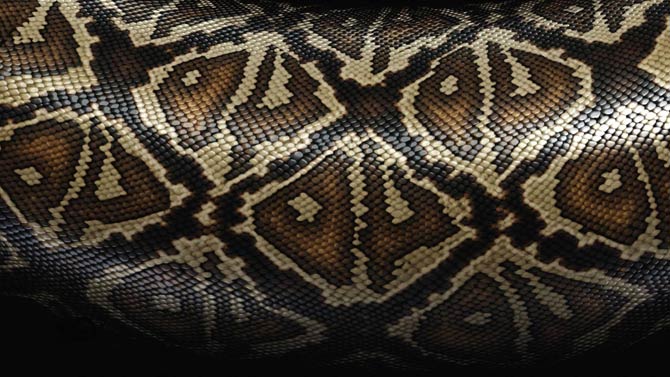
Snake’s skin
Snakes need hard-wearing leather for their lifestyle. After all, they move on the stomach, and not infrequently on rough, hard and rough surfaces. Walking on sand, rocks or tree bark could damage the epidermis and internal organs. However, its construction makes the hoses safe.
If you look at the snakeskin, you will notice that its top layer is hard on the outside and gradually becomes softer on the inside. Such a structure – stiff on the outside, flexible inside – means that the pressure force of sharp edges does not act in points, but is spread over a larger area. It also helps with movement as it increases traction.

Scales on a snake’s skin
Moreover, the snake’s skin is covered with scales, creating a smooth, dry texture. Abdominal scales when moving compress the surface on which the reptile moves. They can have a flat, granular or longitudinal convexity structure, and their shape and number characterize individual species. The scales are joined together to form one stretchy epidermis, which additionally protects the animal.
Oily snakeskin
Interestingly, the structure of the dorsal and abdominal scales differs. Both are covered with a layer of fat, but on the dorsal scales, the lipid molecules lie in a disorderly manner and on the abdominal ones they are arranged in an organized manner.
This makes the backsheet slippery, which allows the snake to crawl more easily and at the same time makes its skin less abrasive. It is worth noting, however, that the fat layer does not cause the animal to glide forward without being in control of its movement. On the contrary, the protective skin of the snake does not prevent the abdominal scales from compressing the surface over which they slide.
So it can be said that the skin of a snake is both slippery and non-slip at the same time.
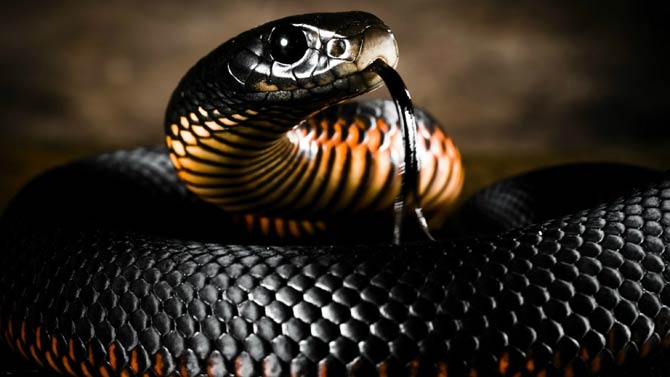
Sensitive snakeskin
Additionally, snakeskin is also very sensitive. In some species (including pythons and rattlesnakes), the scales on the animal’s head contain very sensitive thermal receptors that detect minimal temperature differences. This allows the reptile to accurately determine the location of the victim and its size.
What does science say?
The discovery of the specificity of the structure of snakes’ skin gave scientists the opportunity to undertake research on its usefulness in various fields, including in medicine, production technology, robotics and mechanics.
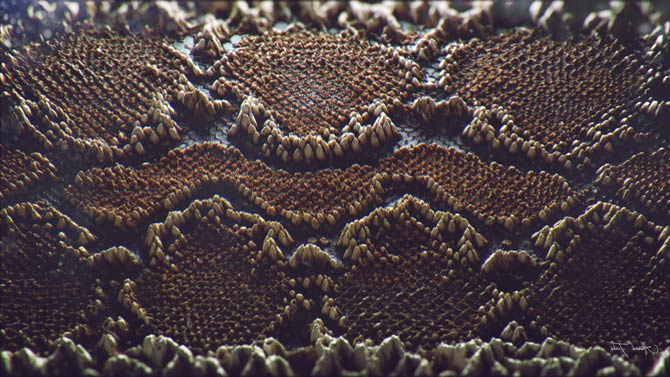
Application in implants
Medical researchers, for example, would like to use the anti-slip properties of hoses to produce durable and grippy foot implants. Work is also underway on a recently invented special material based on pectin and inspired by temperature sensors in snakes.
This material, used as artificial leather, exceeds the sensitivity of real human skin and can be used as a covering for limb prostheses. It would be a real breakthrough in medicine if it provided sensory communication between the implant and the brain. Moreover, scientists also plan to use this material in robotics to create more precise and sensitive machines.
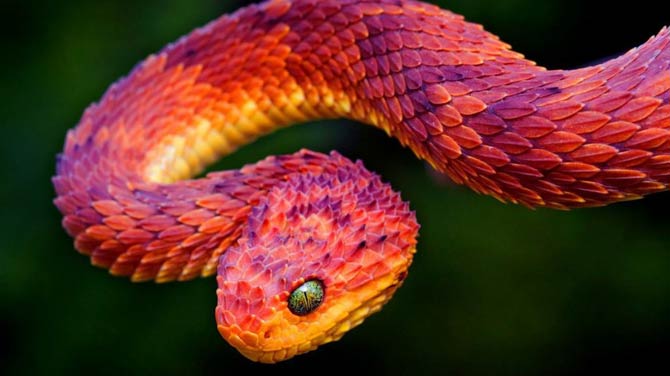
Application in production
Manufacturing technologists are also interested in the properties of snakeskin. They claim that if their lipid-shell epidermis were used, artificial protective coatings with a very low coefficient of friction could be created. This technology would be useful in the production of wear-resistant paints, lubricants that extend the life of engines, or drives and conveyor belts free of harmful factors.

Application in engineering
The engineers were also delighted with the low abrasion of the leather, the controlled glide and the precision of the snake’s movements. After researching various types of reptiles, they found that snakes are adept at “swimming” on sand. By mimicking their structure and the way they move, scientists created robots for special tasks – machines capable of moving quickly and efficiently through sand and other granular surfaces to save people.
So it turns out that the construction of snakeskin can teach people a lot. Let us hope that we will be able to spread these technologies so that they are available to everyone in need.
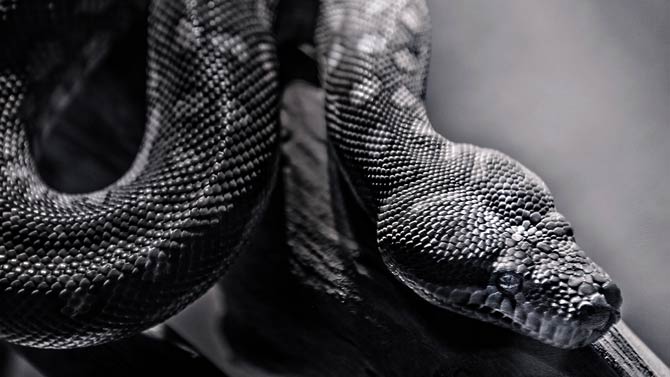
Snakeskin – interesting facts
- Snakes shed their skin every two to three months. It must be extremely durable in order for the animal to exploit it for such a long time.
- Shedding skin in snakes is a moult (molt). Interestingly, the animal sheds all its skin at once, the way a human takes off a sock by turning it inside out.
- The snake’s eyelids are also covered with scales, but transparent. Therefore, the snake gives the impression that it has never closed its eyes.
- In alternative medicine, apart from the skin of the snake, for various ailments, its meat is also used (most often cooked in soup). For example, in Uzbekistan, with a little effort, you can buy a snake “from under the counter” at almost every market stall, although it is not officially sold. For some time, pharmacies even sold specifics based on powdered snake meat.
- In cosmetics, snake venom is used. Courageous clients can get a rejuvenating treatment with the use of this secretion, but it is quite an expensive procedure.
- Ophiology is a branch of herpetology concerned with the study of snakes.

Recommended
- The most venomous snakes – Top 100
- The Longest snakes
- Snakes
- Cobras – fearsome snakes
- Black mamba
- Inland taipan
- Anaconda
- Titanoboa
- Fastest animals
- Fastest birds
- Largest eagles

